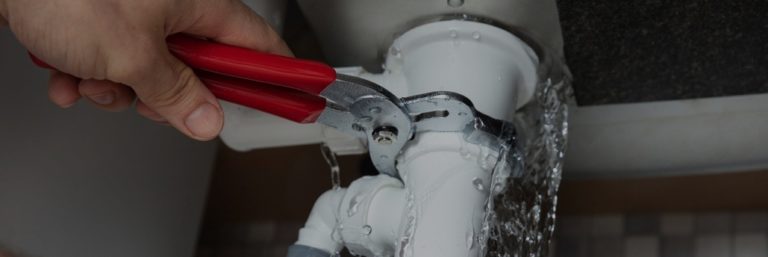Do you find yourself hunting for facts and techniques about Locating water leaks?

Early discovery of leaking water lines can alleviate a possible calamity. Apart from saving you money, it will decrease the worry and also aggravation. The moment you find a leakage, calling your plumber for fixings is the best service. However, some little water leakages may not be visible. Right here are some hacks that help if you can not identify it with your nude eyes.
1. Examine the Water Meter
Every house has a water meter. Inspecting it is a proven way that aids you discover leaks. For beginners, turn off all the water resources. Make sure no one will certainly flush, make use of the tap, shower, run the washing equipment or dishwashing machine. From there, most likely to the meter as well as watch if it will certainly change. Given that no one is utilizing it, there should be no motions. If it relocates, that indicates a fast-moving leakage. Likewise, if you discover no changes, wait a hr or 2 and inspect back once again. This implies you may have a sluggish leak that might also be below ground.
2. Examine Water Intake
Assess your water bills as well as track your water intake. As the one paying it, you must see if there are any inconsistencies. If you detect sudden changes, despite your consumption being the same, it indicates that you have leakages in your plumbing system. Bear in mind, your water expense need to drop under the very same array on a monthly basis. A sudden spike in your costs shows a fast-moving leakage.
On the other hand, a stable increase on a monthly basis, despite the same behaviors, shows you have a slow leakage that's also gradually escalating. Call a plumber to extensively check your residential or commercial property, specifically if you really feel a warm area on your floor with piping underneath.
3. Do a Food Coloring Test
30% comes from commodes when it comes to water usage. Test to see if they are running properly. Decline specks of food shade in the storage tank and wait 10 mins. If the color in some way infiltrates your dish during that time without flushing, there's a leakage between the container and dish.
4. Asses Outside Lines
Don't fail to remember to examine your exterior water lines too. Test faucets by affixing a yard hose pipe. Needs to water permeate out of the connection, you have a loosened rubber gasket. Change this as well as make sure all links are limited. If you've obtained a lawn sprinkler, it will certainly help get it properly analyzed and also maintained yearly. One little leakage can throw away lots of water and also increase your water costs.
5. Examine and Analyze the Scenario
Home owners must make it a behavior to inspect under the sink counters and also even inside cupboards for any kind of bad odor or mold and mildew development. These 2 red flags show a leakage so prompt interest is called for. Doing routine evaluations, also bi-annually, can conserve you from a major issue.
Extra importantly, if you know your home is already old, keep a watchful eye on your heaters, hoses, pipes and so on. Check for discolorations and weakening as the majority of devices as well as pipes have a life span. They will certainly likewise naturally wear away because of wear and tear. Do not wait for it to escalate if you presume leaking water lines in your plumbing system. Call an expert plumber immediately so you don't wind up with a horrible mess in your house.
Early detection of leaking water lines can minimize a potential disaster. Some small water leakages might not be visible. Checking it is a guaranteed means that helps you discover leaks. One small leak can lose tons of water and spike your water bill.
If you believe dripping water lines in your plumbing system, do not wait for it to rise.
WARNING SIGNS OF WATER LEAKAGE BEHIND THE WALL
PERSISTENT MUSTY ODORS
As water slowly drips from a leaky pipe inside the wall, flooring and sheetrock stay damp and develop an odor similar to wet cardboard. It generates a musty smell that can help you find hidden leaks.
MOLD IN UNUSUAL AREAS
Mold usually grows in wet areas like kitchens, baths and laundry rooms. If you spot the stuff on walls or baseboards in other rooms of the house, it’s a good indicator of undetected water leaks.
STAINS THAT GROW
When mold thrives around a leaky pipe, it sometimes takes hold on the inside surface of the affected wall. A growing stain on otherwise clean sheetrock is often your sign of a hidden plumbing problem.
PEELING OR BUBBLING WALLPAPER / PAINT
This clue is easy to miss in rooms that don’t get much use. When you see wallpaper separating along seams or paint bubbling or flaking off the wall, blame sheetrock that stays wet because of an undetected leak.
BUCKLED CEILINGS AND STAINED FLOORS
If ceilings or floors in bathrooms, kitchens or laundry areas develop structural problems, don’t rule out constant damp inside the walls. Wet sheetrock can affect adjacent framing, flooring and ceilings.
https://www.servicemasterbyzaba.com/blog/how-to-detect-water-leakage-in-walls/

We are very serious about Detecting hidden plumbing leaks and I hope you enjoyed the entire blog entry. Are you aware of another individual who is fascinated with the subject? Please feel free to promote it. We truly appreciate reading our article about Detecting hidden plumbing leaks.